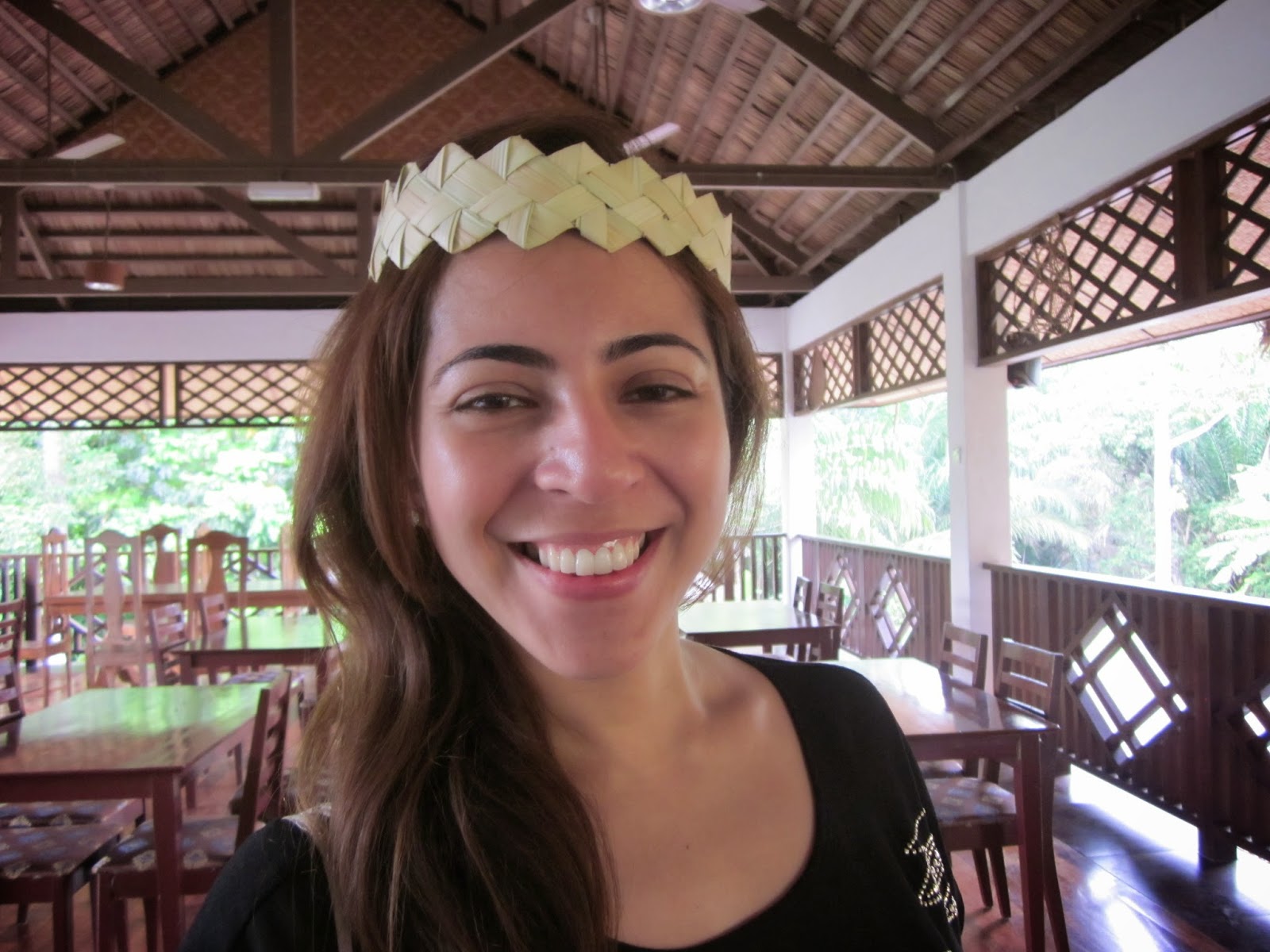At long last, on the Sunday yesterday, we managed to make a road trip to Pulau Carey. The Carey Island famed for being the home of the Mah Meri* Orang Asli (Indigenous/Aboriginal people). There are five OA villages here completely 'sheltered' within the ubiquitous oil palms of the Sime Darby plantations that cover the whole island. We visited the Cultural Village at Kampung Sungai Bumbun for a glimpse of the culture of the Mah Meri although we knew (from their website) that on this day no cultural performance /demonstration was scheduled. There we met Encik Sayor who seemed to be minding the Cultural Village, and his 12 year old daughter Siti Aida. We also later met Madiah (aka Genui), Siti Aida's grand aunt. They are rather friendly but quite shy.
* pronounced Maq Miri?
 |
| A with Encik Sayor & Siti Aida (CNB 2014) |
There are beautiful nipah palm and pandanus leaf weave decorations set out all over the Cultural Village. These woven decorative pieces of birds, fishes and flowers/leaves can be found by the archways and doorways and also placed in strategic positions on tables/counters and long poles. (Additional information: Take a look at our 10 sen coin. The Orang Asli motif on the back of the coin is the unique weave pattern of the Mah Meri!)
 |
| Palm leaf weave decor and rattan toys (CNB 2014) |
 |
| B, Encik Sayor, Siti Aida & moi (AB 2014) |
The Mah Meri belong to the Senoi subgroup which includes the Che Wong, Jah Hut*, Semoq Beri, Semai and Temiar. The Mah Meri (and Jah Hut) are famous for their wood carvings. The sculptures display their daily lives, mythical beliefs and cultural values. Their mystical wood art including wooden masks and moyang sculptures have acquired the Unesco seal of excellence.
 |
| Some Mah Meri wood art on display (CNB 2014) |
 |
| Encik Sayor, A, Madiah, moi & Siti Aida (BB 2014) |
From information gleaned from a few sources, the Mah Meri living in the five villages in Pulau Carey (named after the former British Civil Service Officer Valentine Carey; who acquired the island originally called Pulau Si Alang from Selangor Sultan Sulaiman) are mainly
 |
| B is all smiles in a Mah Meri tempok/songkho (plaited headband) (CNB 2014) |
We hope to visit again on a day when there are performances and perhaps during the festivals of Puja Pantai and Hari Moyang (Spirit's Day) in February/March. Also to visit the open air work place of Mah Meri craftsmen (like Gali Adam), to see the haunting mask sculptures (carved out of the swamp hardwood Nyireh Batu) for which the Mah Meri are famous for.
 |
| Decorations of palm weave at the wedding dais (CNB 2014) |
 |
| B, M and A pose by a moyang sculpture (CNB 2014) |
 |
| At the model Rumah Moyang (AB 2014) |
References:
1. www.mmcv.org.my
2. www.bnm.gov.my/microsites/2011/coins
3. Orang Asli and Their Wood Art/Anthony Ratos. Marshall Cavendish, 2006. Ex Libris CNB 1921
Note: The first I heard of the Mah Meri (aka Ma' Betisek) was when I met Dr Wazir Jahan Karim while working in USM. She was the first woman to do anthropological research on the Orang Asli in Pulau Carey. Her research was published as "Ma' Betisek Concepts of Living Things" (London School of Economics Monographs on Social Anthropology - 54. (1981, 2004).
1. www.mmcv.org.my
2. www.bnm.gov.my/microsites/2011/coins
3. Orang Asli and Their Wood Art/Anthony Ratos. Marshall Cavendish, 2006. Ex Libris CNB 1921
Note: The first I heard of the Mah Meri (aka Ma' Betisek) was when I met Dr Wazir Jahan Karim while working in USM. She was the first woman to do anthropological research on the Orang Asli in Pulau Carey. Her research was published as "Ma' Betisek Concepts of Living Things" (London School of Economics Monographs on Social Anthropology - 54. (1981, 2004).

No comments:
Post a Comment